237) Go to the symphony (blindfolded) 30 Sep 2012
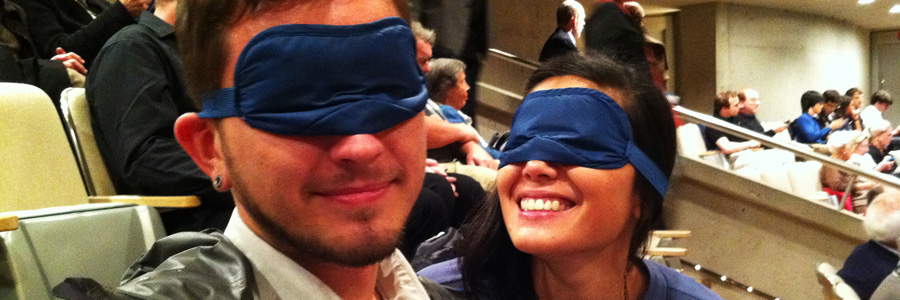
First off, thanks to John’s parents who agreed to partake in this “cultural experience” with us, and for not bailing out when we told them we’d be wearing blindfolds next to them. (Some people would take issue with that.)
Also, much thanks to John’s sister who thoughtfully bought us all tickets to attend our first symphony performance together. (She also threw in those cute, snugly blindfolds in the envelope with our tickets.)
I suppose the idea behind this rather off-beat to-do, was to approach the symphony experience with a heightened level of awareness. Neither of us can claim to be classical music fans, but we certainly appreciate the artistry and the history behind this dying genre.
There’s a reason why people in their teens and 20’s don’t give a hoot about Johannes Brahms. There’s no connection there. Those same people will turn 30 and 40 and will still not give a hoot about Johannes Brahms. What’s certain is that sooner or later classical music will phase out (sorry it’s true). Symphony administrators and their education teams need to smarten up and re-think the box.
Wearing a blindfold may seem silly, but it’s a small, symbolic gesture with potentially large gains. In our visually saturated, hyper-tech culture, perhaps it’s more important now to train young people how to listen than how to look. When you remove sight, you remove many of the distractions that keep you from staying focused. There’s something to gain here.
Listening to Brahams blindfolded didn’t necessarily make the music any “better,” but the experience itself seemed richer, fuller, more purposeful. Blindfolded, we were forced to notice all the varied nuances, sounds and intricacies, which may have been lost if we simply listened with our eyes alone. It was an unusual experience, but a good experience; and we may just come back and listen more.


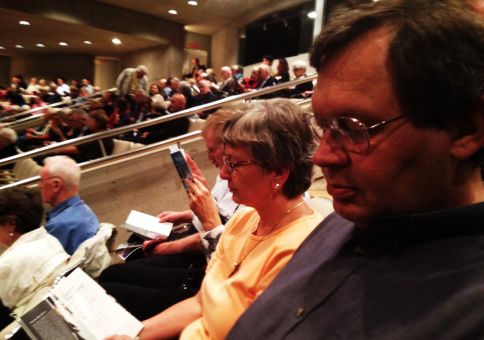
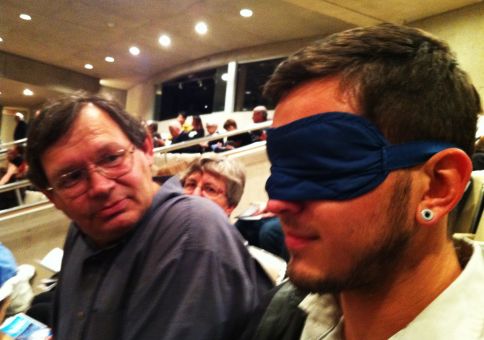
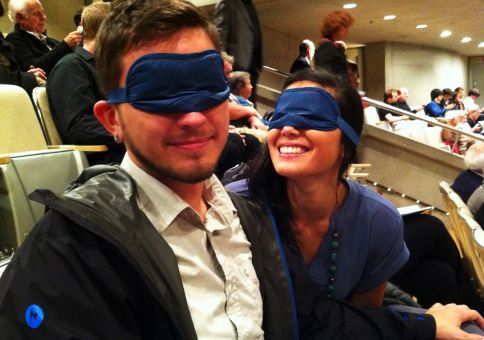
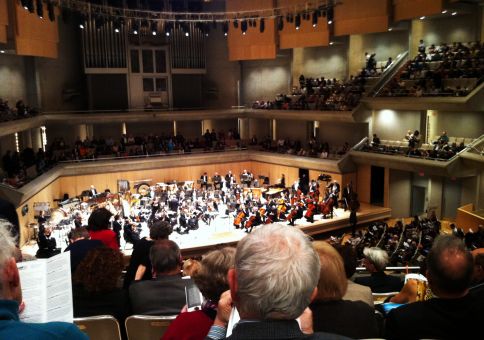

Photo #3: “Ich glaube dass der Postmann ist wirklich deiner Vater.”